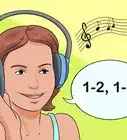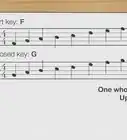This article was co-authored by wikiHow Staff. Our trained team of editors and researchers validate articles for accuracy and comprehensiveness. wikiHow's Content Management Team carefully monitors the work from our editorial staff to ensure that each article is backed by trusted research and meets our high quality standards.
This article has been viewed 13,775 times.
Learn more...
An orchestra is a group of musicians who play five types of instruments: woodwinds, brass, percussion, keyboards, and strings. Each of these five types of instruments produces different types of sounds. Together, these sounds can be combined to create a harmony which is directed or led by the conductor. The conductor is not just the director of the harmony, they are the glue that holds the orchestra together. There are many things you should learn before conducting your first orchestra and many more things you should do when in front of an orchestra.
Steps
Learning the Basics
-
1Learn to read sheet music in order to understand the composer. A conductor’s job is to bring sheet music to life. To translate what the sheet music says into something entertaining and enjoyable. The conductor is doing this on behalf of the music’s composer since the composer themselves cannot be there. Therefore, a conductor not only needs to know how to read music in order to play it, but they have to be able to read music to interpret it into a performance.[1]
- A conductor needing to read music is equivalent to a director understanding a screenplay or a literature scholar understanding poetry.
-
2Learn to play at least one instrument at the expert level. Most conductors do not start out as conductors but as musicians. Just like you need to learn to walk before you run, a conductor needs to learn to play an instrument before they can direct other people how to play instruments. A conductor needs to understand the basics of every single instrument in their orchestra, which is a much easier thing to do if they first know how to play an instrument expertly.[2]
- Just like a conductor is interpreting sheet music into a performance, they must also learn how the tools of that performance function so they interpret the sheet music properly.
Advertisement -
3Study every type of instrument you will be conducting. As the conductor, you need to be able to direct all the musicians in your orchestra, regardless of which instrument they play. In order to do this effectively, you need to understand the basic functions of each instrument (how it works, what’s easy to do on the instrument, what’s hard to do, where do issues usually come up with a specific instrument, etc.). A conductor cannot tell someone how their instrument should sound if they don’t understand how the instrument functions.[3]
- It’s not necessary for a conductor to know how to play each and every instrument as well as the members of the orchestra. However, the orchestra will better respect a conductor who can at least ‘talk their language’ in terms of each type of instrument.
Developing the Proper Hand Movements
-
1Raise your hands to indicate the piece is about to begin. Raise both of your hands (or baton, if you’re using one) to indicate to the orchestra you are ready to begin the performance. This will also signal to the orchestra that they should get into their starting positions and be ready to begin playing when you direct them.[4]
- Some conductors will raise their hands above their heads, in a very deliberate movement. Others will simply raise their hands at the same level as their face to draw the attention of the orchestra.
-
2Provide a preparatory beat with your right hand to start the music. Before the orchestra actually starts to play their instruments, indicate one preparatory beat with your right hand. This preparatory beat provides the orchestra with the starting tempo of the piece. Start your preparatory beat with an obvious inhalation that can be seen by the whole orchestra.
- A preparatory beat is no different than any other beat you’ll be providing to the orchestra. The only difference is that the preparatory beat is done before the orchestra starts to play. It’s the equivalent of counting 1-2-3-4.
-
3Signal the beat of the piece with upward and downward movements. A downbeat is the first beat in a bar and an upbeat is the last beat in a bar. For example, in a 4/4 piece, every bar has 4 beats that would be: downbeat-beat-beat-upbeat. The middle beats of a bar are not represented by an upward or downward movement of your right hand. Instead, they should be indicated using a right or left (side-to-side) movement of your right hand. As the conductor, each bar would require you to move your right hand down, then to one side, then to the other side, then up.[5]
- Upbeats are named as such because they’re represented by an upward movement. Downbeats are named as such because they’re represented by a downward movement.
- The number of movements of your right hand during a bar will depend on the specific piece you’re playing.
- Whether you move your right hand to the right first or to the left first is completely up to you.
-
4Change the speed of the beat to indicate the tempo. If you require the tempo to speed up, move your hands through the sequence of movements faster. If you require the tempo to slow down, slow the movement of your hands through the sequence of movements. If the tempo is really slow, you can add a ‘sub-beat’ to your movements.[6]
- A ‘sub-beat’ is an additional, smaller movement in the same direction as the beat for which it belongs.
-
5Use your left hand to cue a specific musician or section. Formal conducting standards claim that the left hand should not be used to direct the beat of the music. Instead, the left hand should be used to cue a musician or section, to indicate the dynamics of the piece, or to provide additional expression.[7]
- The specific movements you make with your left hand in order to cue a musician or section is up to you. However, in addition to using your hand, make sure you make eye contact as well.
-
6Communicate the dynamics of the music with the size of your movements. The dynamics of the music is the character or expression of the music. It can include slow, gentle, quiet sections of a piece or loud, fast, intense sections of a piece. As the conductor, it’s your job to ‘tell’ the orchestra what dynamics you expect using the size of your movements. The ‘size’ of your movements is depicted by the amount of space your arms take up when conducting.[8]
- For example, a slow, gentle, quiet section of the music may be represented by small, close movements of just your hands. Whereas, a loud, fast, intense section may be represented by large, wide movements of your whole arms.
- Your specific movements are directly related to the piece of music being played and how you, the conductor, interpret the music.
Conducting a Symphony Orchestra
-
1Stand straight with your feet shoulder-width apart while conducting. When you first get up on the conductor’s podium, find your place in front of the stand, spread your feet so they’re shoulder-width apart, and then relax your shoulders and body. Stay loose throughout the music, do not tense up until it’s required to direct the orchestra.
- Every expression you make, as a conductor, could be interpreted by the orchestra as a direction. Avoid inadvertent directions by staying relaxed.
-
2Alter your stance and movements based on the expertise of the orchestra. Professional orchestras, unsurprisingly, have more experience playing with a wide variety of conductors and have the ability to decipher a conductor’s movements. However, amateur and novice orchestras (e.g., elementary or high school orchestras) require not only a lot more direction, but they need that direction to be very clear.[9]
- Amateur and novice orchestras may also require instruction on what your various movements mean and what they should do when you make them.
-
3Give all your attention to the orchestra by looking directly at them. While you will likely have the sheet music for the piece you’re playing in front of you, you should provide yourself with enough time to memorize it in advance so you don’t need to stare at it. Instead, your eyes should always be on the orchestra itself and the individual musicians, especially when it’s time to cue them.[10]
- In an ideal situation, the sheet music should only be needed if you get distracted and need to find your place.
- While you want to look at the musicians, you want to avoid staring at any one musician for an extended period of time, especially if they’re performing a solo.
References
- ↑ https://www.classicfm.com/discover-music/why-learn-to-read-music/
- ↑ https://www.classicfm.com/discover-music/instruments/conductor/
- ↑ https://www.violinist.com/discussion/thread.cfm?page=1281
- ↑ https://www.nytimes.com/2012/04/08/arts/music/breaking-conductors-down-by-gesture-and-body-part.html?_r=1&pagewanted=all
- ↑ http://www.differencebetween.net/miscellaneous/culture-miscellaneous/difference-between-downbeat-and-upbeat/
- ↑ https://www.nytimes.com/2012/04/08/arts/music/breaking-conductors-down-by-gesture-and-body-part.html?_r=1&pagewanted=all
- ↑ https://www.nytimes.com/2012/04/08/arts/music/breaking-conductors-down-by-gesture-and-body-part.html?_r=1&pagewanted=all
- ↑ https://www.nytimes.com/2012/04/08/arts/music/breaking-conductors-down-by-gesture-and-body-part.html?_r=1&pagewanted=all
- ↑ https://www.violinist.com/discussion/thread.cfm?page=1281
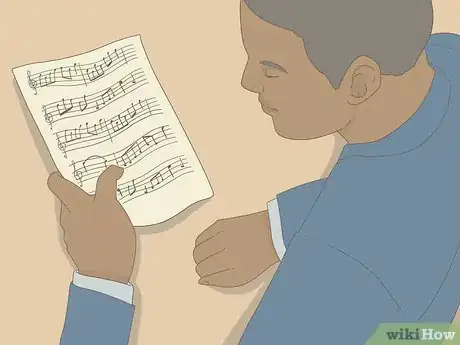



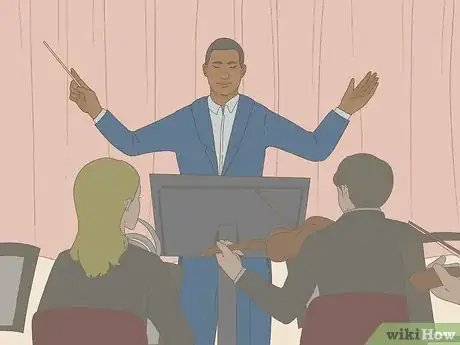
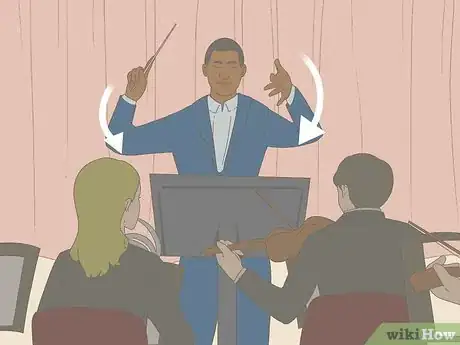


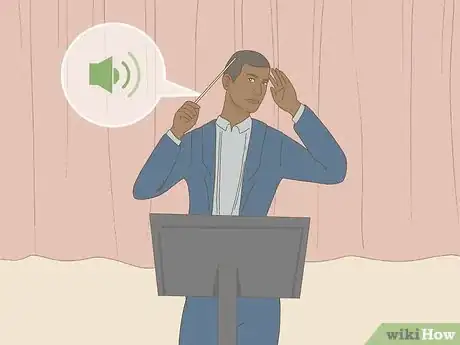

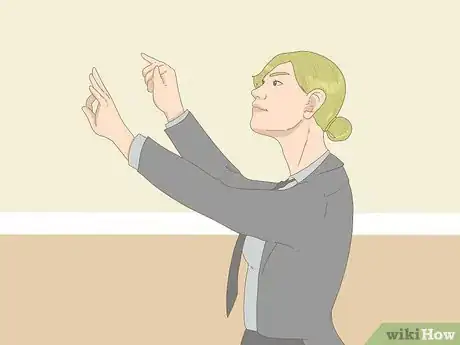
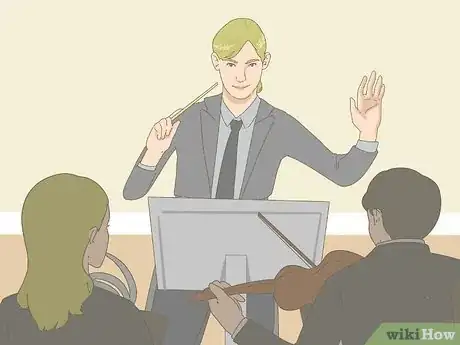
-of-a-Song-Step-9.webp)
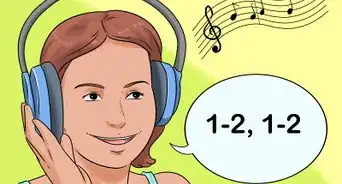
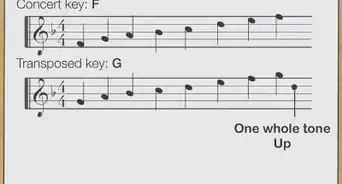
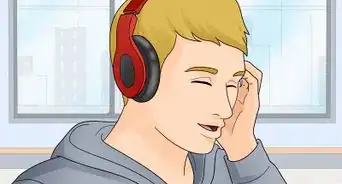
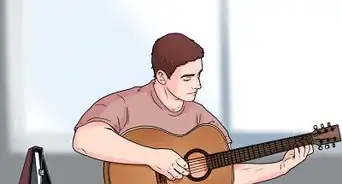


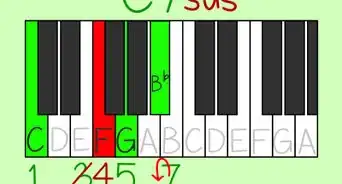
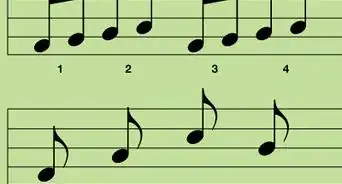

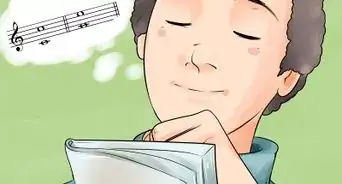




-of-a-Song-Step-9.webp)
